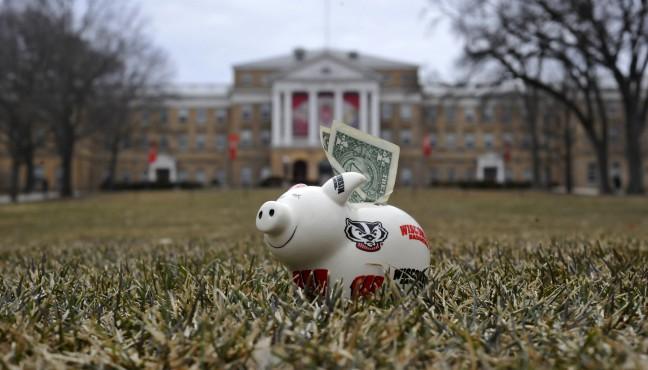The University of Wisconsin will face significant financial challenges in the coming years as aging campus buildings deteriorate after decades of use.
Since many of UW’s campus facilities constructed in the 1950s, 1960s and 1970s, university buildings are breaking down with increasing frequency and growing consequences for students and faculty.
In early April, two concrete slabs broke off the third floor patio of 54-year-old Van Hise Hall, falling onto the sidewalk in front of the Linden Street entrance. Though no one was injured in the incident, the event exposed the safety risks created by campus structures in decline.
Gov. Tony Evers immediately authorized funding for emergency repairs of the building, but the incident highlighted a growing issue. How can UW appropriately balance a limited budget with safety issues stemming from disrepair on campus?
In Feb. 2020, a break in a water line flooded two engineering buildings on campus. Classes were relocated for weeks, and many labs were damaged. Water was unavailable in the buildings for over a month, forcing faculty and students to use nearby facilities for bathrooms, sinks and drinking fountains.
A year prior, 30 incidents of flooding occurred in 28 campus buildings following extreme cold, requiring hundreds of classes to be temporarily or permanently relocated. The Chemistry Building was closed entirely for several weeks while other buildings remained inaccessible for the entire semester. University officials reported the damage to the 28 buildings cost an estimated $4.9 million.
These incidents illustrate the ramifications of an aging campus for the UW community, as well as the high costs stemming from the growing backlog of deferred maintenance in recent years.
UW professor of Planning and Landscape Architecture Brian Ohm said the need to replace older buildings was identified by the Facilities Planning & Management team in the Campus Master Plan years ago. The cost of maintaining buildings rises as age increases, Ohm said.
“Planning is an iterative process,” Ohm said. “As time goes on, the public may become more aware of the needs of the University to replace certain buildings.”
With the negative financial impacts of COVID-19 already putting pressure on the university’s resources, the challenges of maintaining, repairing and replacing deteriorating facilities seem significantly larger.
The UW System lost $317.7 million in revenue and additional expenses between March and December, according to the Milwaukee Journal Sentinel. UW Chancellor Rebecca Blank estimated the university’s total COVID-19 costs and losses at $319 million and stated the need for budget cuts over the next few years.
April 12, UW System Interim President Tommy Thompson and Chancellor Blank hosted a tour of campus, showcasing some of the academic buildings most in need of repair or replacement.
The tour was designed to highlight the great need for increased financing and garner support for the $1 billion Evers’ outlined in his budget for maintenance projects on aging facilities and construction of new buildings.
Director of Media Relations for the UW System Mark Pitsch said UW regularly reviews the allocated funding for repair, renovation and replacement of campus buildings. The UW Board of Regents meet eight times each year to review and approve UW projects.
The UW System’s sizable funding request, which is $300 million dollars less than the $1 billion Evers’ requested, exhibits the dire need for additional financial support in the coming years, Pitsch said.
“Our budget request represents a prudent, yet necessary, investment in our campus infrastructure,” Pitsch said in a statement to The Badger Herald.
Evers’ budget allocates $73 million to replace, relocate and construct underground utilities on Engineering Drive, $150 million for an engineering building to replace the 82-year-old Computer Aided Engineering Center and $88 million for a new academic building for the College of Letters and Science.
As part of the 2021-23 capital budget proposal, the requested funding must be approved by the Wisconsin State Legislature. The level of funding will be determined by the Committee on Joint Finance, which will begin meeting in the next several weeks, according to the Division of Facilities Planning & Management.
State funding plays a critical role in financing the construction of new campus facilities for the UW System but must compete against the needs to fund the buildings of other state agencies. Supplemental funding is provided by private donors and grants, according to the Division of Facilities Planning & Management.
ASM pushes UW to provide additional financial relief to students during pandemic
“UW System President Tommy Thompson is working diligently to make sure the public and the legislature understand the importance of campus investment,” Pitsch said.
Though students, faculty and staff all have representatives on the Campus Planning Committee, Pitsch encourages students to share their concerns with campus leadership about outdated classrooms, inadequate research facilities and decrepit buildings.


